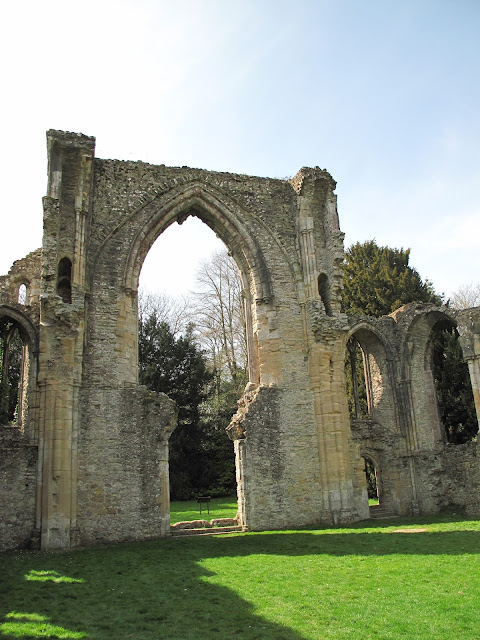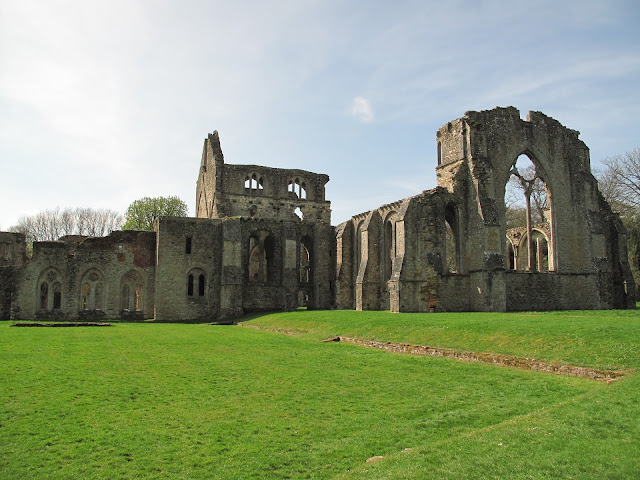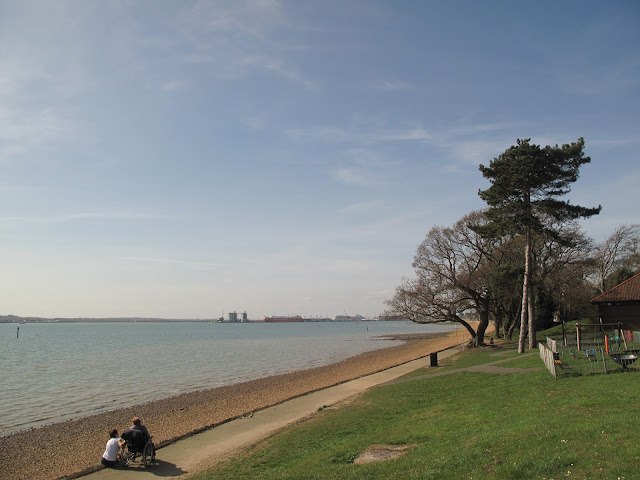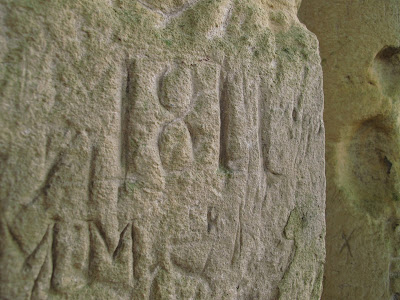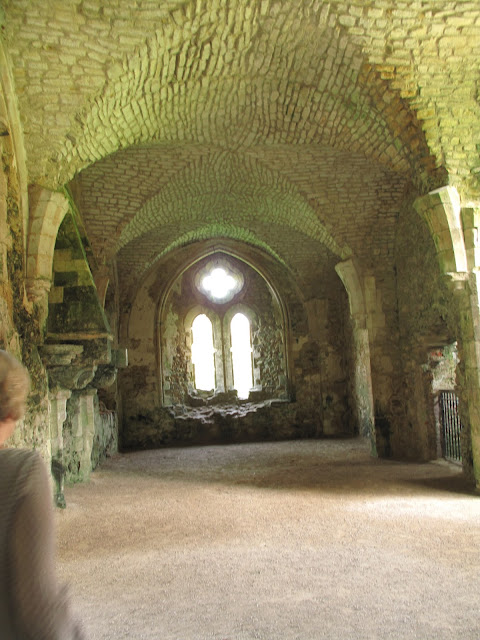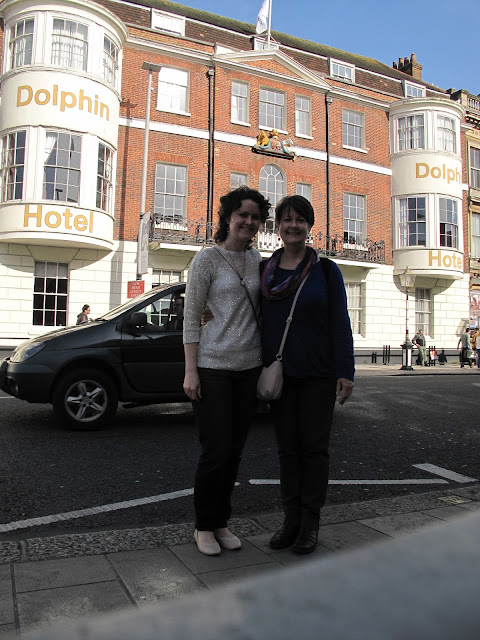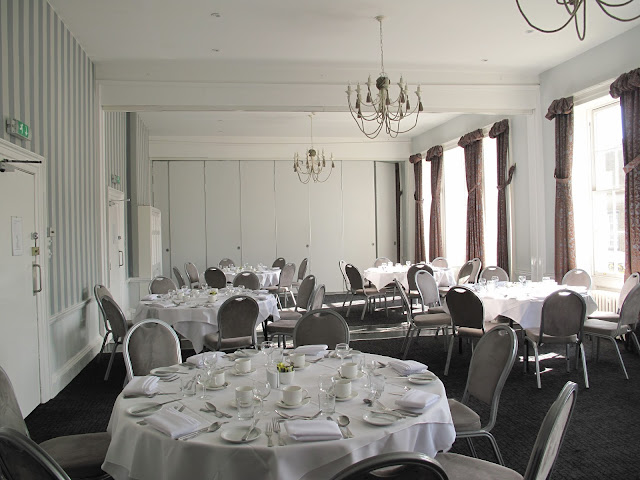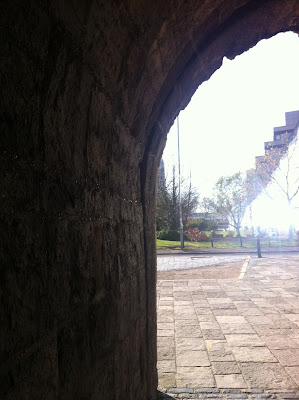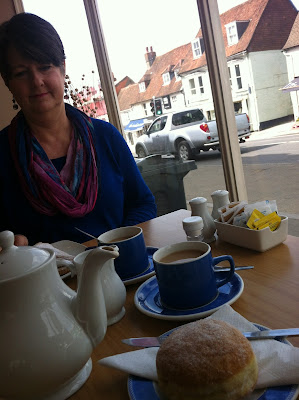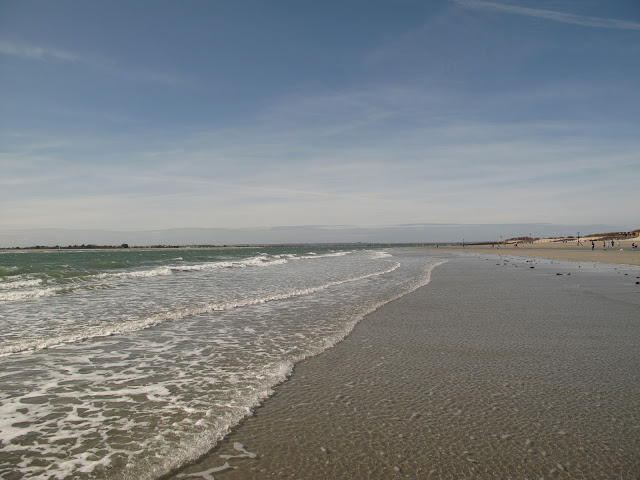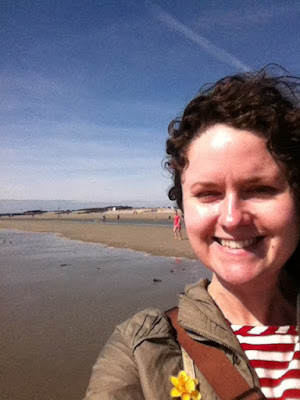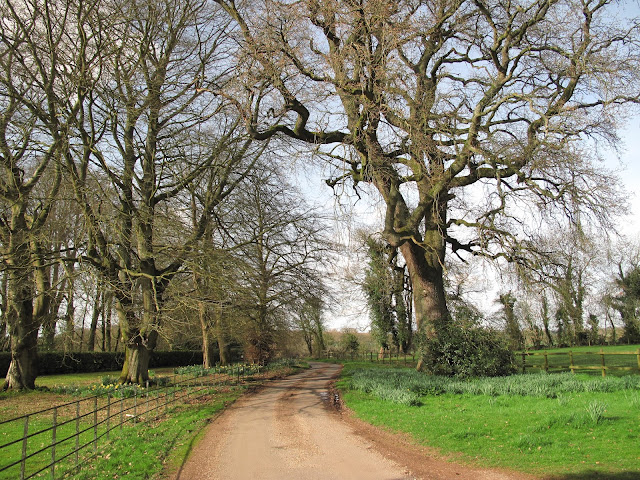 |
| | The bright and beautiful place where Jane Austen grew up: Steventon | |
 England 2015 Trip Journal
Saturday, April 11
England 2015 Trip Journal
Saturday, April 11
Going from Winchester to Steventon feels like seeing Jane Austen's entire life in a single day. I've always had what amounted to almost a fear of going to Winchester, where Jane died. In my mind it only has sad associations with her life, so I never thought I could really face seeing her grave or the place where she spent the last moments of this life. But, although it was sad, it was a reminder that the real Jane, her spirit, is not buried under Winchester Cathedral – so seeing her grave actually became a comfort. The elegant gold plaque on the wall was added in 1870 by her nephew and biographer James Edward Austen-Leigh, and the stained glass window in 1900 by public subscription. But the actual marker given to her at her death in 1817 is much simpler, and lies in the floor below the other two. It was composed by her brother Henry, and reads:
In memory of
JANE AUSTEN,
youngest daughter of the late
Revd GEORGE AUSTEN
formerly Rector of Steventon in this County.
She departed from this Life on the 18th of July, 1817,
aged 41, after a long illness supported with
the patience and the hope of a Christian.
The benevolence of her heart,
the sweetness of her temper, and
the extraordinary endowments of her mind
obtained the regard of all who knew her, and
the warmest love of her intimate connections.
Their grief is in proportion to their affection
they know their loss to be irreparable
but in their deepest affliction they are consoled
by a firm though humble hope that her charity,
devotion, faith and purity have rendered
her soul acceptable in the sight of her
REDEEMER


 |
| The window and plaque to mark where Jane was buried. |
 |
| Remembering our Jane. |
The cathedral itself was magnificent! As well it might be, since Winchester was the capital of the Anglo Saxon kingdom of Wessex, and home to Alfred the Great – who is presented quite majestically in statue form near the Eastgate/Broadway roundabout, one of the busiest intersections of the city. The admission was quite reasonable at £8 for each of us. It includes a guided tour, or you can get an audio tour for £3 extra, but we decided to go it on our own. There are traces of the Old Minster on the lawn outside, but the current structure was built by William the Conqueror after his invasion in 1066. I don't think I will ever outlive the wonder of those soaring ceilings that end in the iconic fan vaulting that you have to crane your neck to see – they literally lift your eyes to heaven and remind you of the unearthly glory of God! If the architects were going for that effect, they certainly achieved it.
 |
Approaching Winchester Cathedral on the sunniest of spring days!
(From the Colebrook Street car park.) |

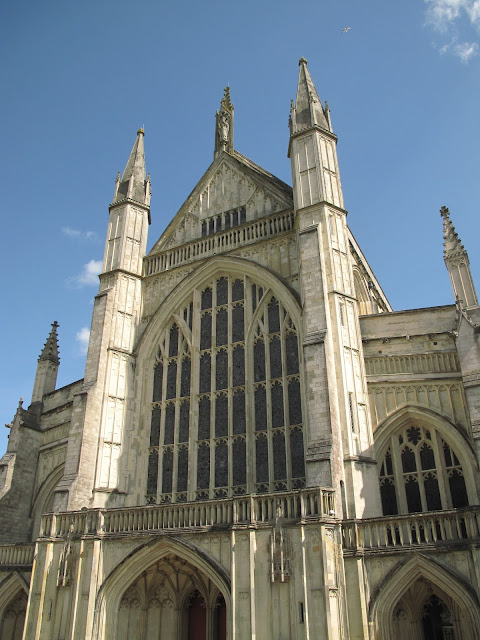
 |
| A chorus of Handel's Messiah wouldn't go amiss right now... |
Besides seeing Jane's grave, there were many unexpected surprises tucked away inside the cathedral. The choir stalls were magnificent, but the most exciting discovery was the stone coffin of King Canute seemingly tucked away behind it. I think my jaw dropped. To see the spot where that infamous Danish invader was actually buried in 1035 –
1035, mind you – was unreal. Seriously unreal.
(Alas, I somehow managed to take zero pictures of this exciting sight.)
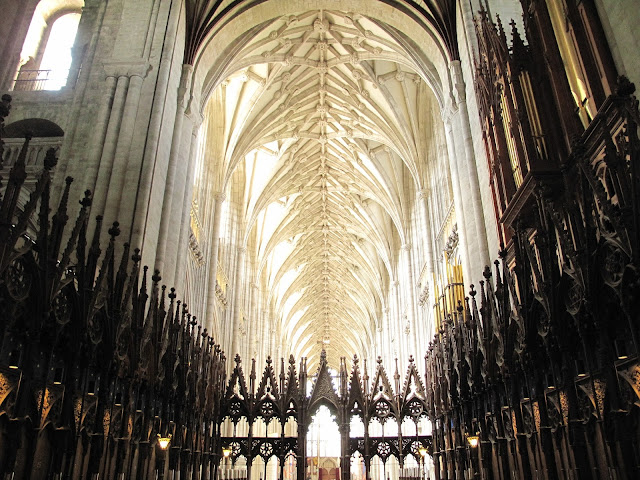 |
| Just standing in some 14th century choir stalls. No big deal... |
 |
| More of those head-tilting fan vaults. |
 |
It's a sunny day in England, therefore
I must eat ice cream. |
When you're done with a bit of sightseeing the next thing to do is to look for the nearest place serving tea – which is almost always right on the premises when you're in England – so we walked over to the Cathedral Refectory. The prices were reasonable, so we grabbed a sausage roll, but to me the most obvious choice on the menu had to be the Hampshire ice cream. It seems to be almost obligatory in England on a sunny day. Practically everyone you see is enjoying ice cream when the sun comes out, as if in celebration, and I wholeheartedly admit to being in favor of this trend. I had to try something especially British, so I chose the blackcurrant flavor, and Mom chose the fail-proof of all flavors: chocolate. It was quite cheering to sit in that bright room filled with people enjoying cakes and tea, salads and sausage rolls. A cafe on the premises of any attraction seems to have become a British institution, and hardly any experience feels more British than that of sitting in one.
We then made our way around to the other side of the Cathedral, past some Tudor houses and a medieval looking wall, took a left on Dome Alley, another left onto Kingsgate, and one more left onto College Street. Seeing #8 College Street, where Jane was staying during her illness, was also surprisingly calming rather than depressing. It is neither a deserted nor a busy place, just a quiet street with a steady stream of pedestrians walking past the blossoming trees and the pale yellow house. I still could not help tearing up for a moment thinking of how much Cassandra must have felt she had lost – "...the gilder of every pleasure" is how she described Jane. But it is comforting to actually see the place and to know that it is a pleasant one.
 |
| Jane's last home. |
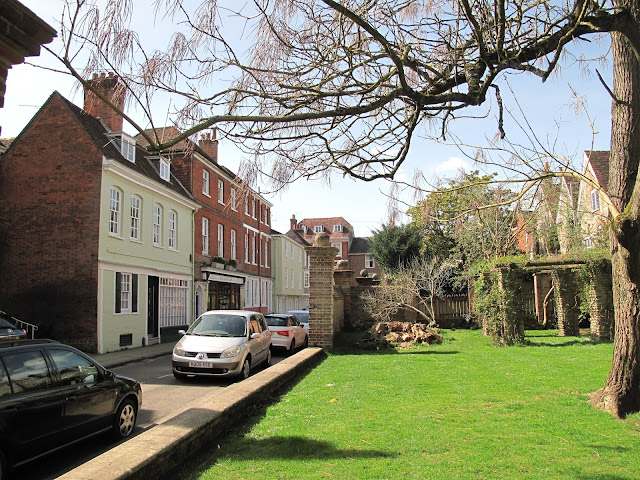 |
| The peaceful park that Jane could have seen out of her windows. |
 |
| Looking the other way down College Street. |
There were quite a few stalls set up on High Street, the historic, pedestrian-only street that now merges into Broadway, so we took a few minutes to browse. We can't resist a bit of food and shopping! Mom was able to find the crepe stand, of course, and kindly shared her delicious discovery with me. The Tourist Information center is also on the High Street, and it is always a good idea to pop inside these places because they will have information (that's their job, right?) on things to do and how to get around.
 |
| Crepes! |
It was getting on in the afternoon, which meant it was time to head to our next destination. We parked in the Colebrook Street Car Park, just off of Broadway and across the street from the Cathedral, so we didn't have to rush back (and we'd paid for four hours). Then we whisked ourselves off to Steventon and Jane's beginning!
Steventon is just under half an hour north of Winchester, and, using our satnav (a.k.a. GPS), we found it easily. We have now walked and have now driven to get to Steventon from the main road, and I definitely prefer driving. The only place to park is at the church, so we started there.
As during our first visit, the entire area was deserted, making it perfectly peaceful. Everything was the brightest, freshest green! The grass was practically glowing in the Spring sunshine, and the air was crisp and clear from the chilly wind, making every view brilliantly clear.
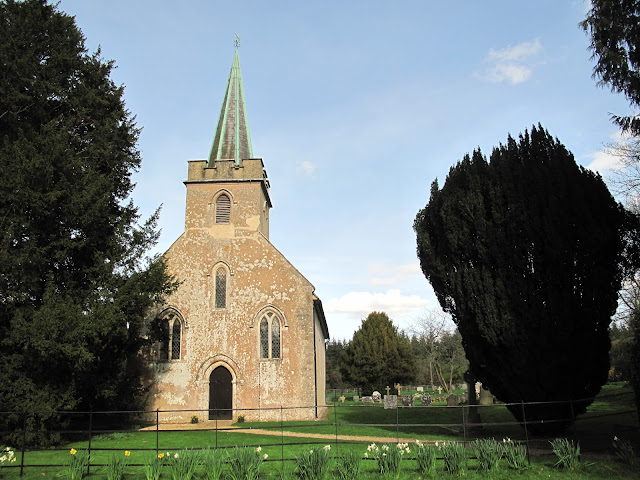 |
| St. Nicholas Church in Steventon – a place Jane knew and loved. |
 |
| The 1,000 year-old yew tree outside of St. Nicholas. |
 |
| Where the Austen family gathered every Sunday for the first 25 years of Jane Austen's life. |
We were able to find a couple of gaps in the hedges to get good shots of where the house had been. I walked down the hill while Mom drove down slowly to avoid being cold. :) I get such a sense of a youthful, happy, lively existence when I'm in Steventon as I imagine Jane and Cassandara traipsing about the country to visit friends and go to balls, walking and giggling arm in arm.
 |
| Where the rectory, the home of the Austen family, once stood. |
 |
This is a more precise look at where the house would have stood.
The lime tree was planted by Jane's brother James before the Rectory was demolished. |
 |
| The happiest of times! |
On the way back to our own little cottage in Alresford we tried to find Manydown, the home of Jane's friends Alethea, Elizabeth and Catherine Bigg, on a little side road with a farm of that name. We couldn't locate the house, but I remembered that The Vyne was also nearby (the house and estate belonging to friends of Jane's brother James). I tried putting The Vyne in our satnav search, and, lo and behold, it was there, and only 4.4 miles away! As we drove down the road toward the house I could just put myself back
into 1793 or so and see Jane and Cassandra in a coach coming to one of
the balls held there. I was wishing so much I could have gone
with them! It was nearly 5:00 so the estate was about to close, of course, but we could see the front of the house from the road, and I was able to stick my camera lens through the gate to get a perfect shot.

Instead of touring The Vyne, we came home to our little cottage in the little English village to eat our delicious dinner of curried chicken and veg. Alresford is
such an English village: tidy, old, picturesque, and a community. It's lovely. Even our cottage couldn't be more English! Situated just off of the high street with it's perfectly quaint brick exterior, it comprises the middle and upper floors, and is a beautiful, creaky, timbered place filled with charming touches like old rugs and landscape paintings. And a tea kettle (which is perhaps the most important and English touch of all).
© 2017 Anna Morton




